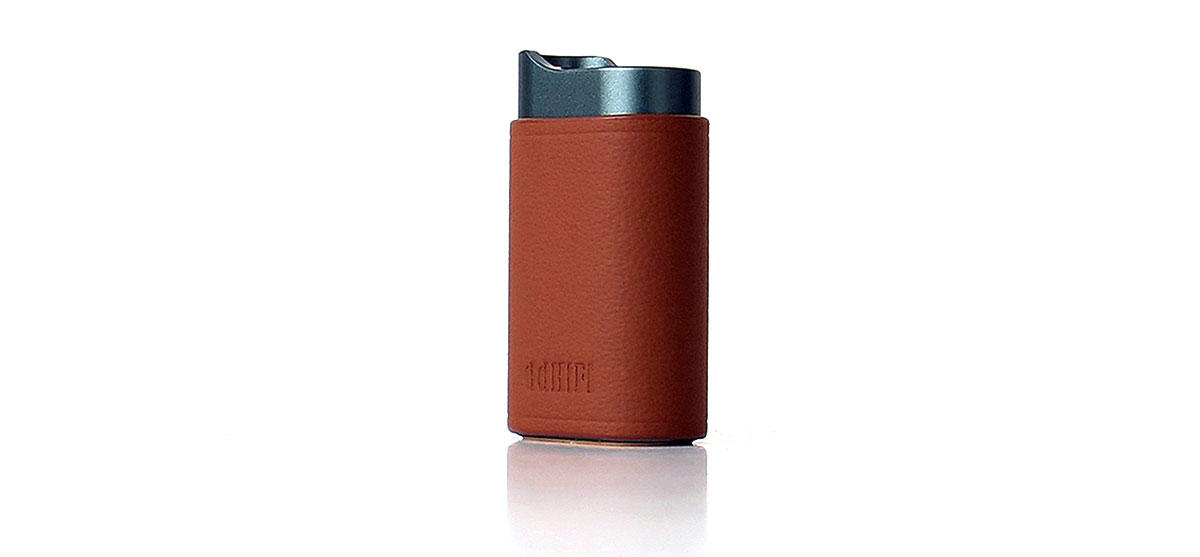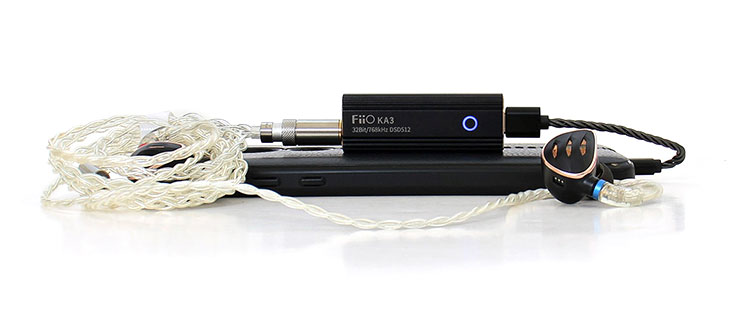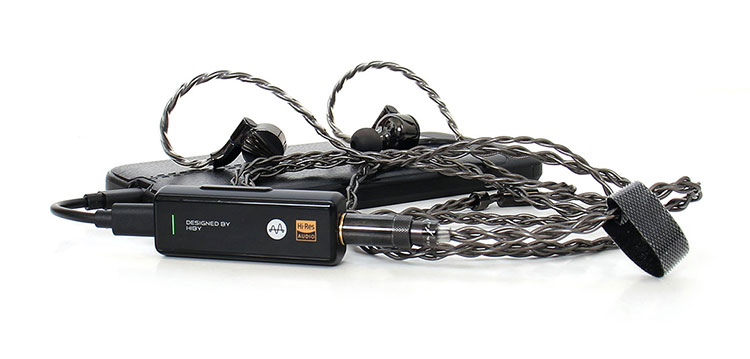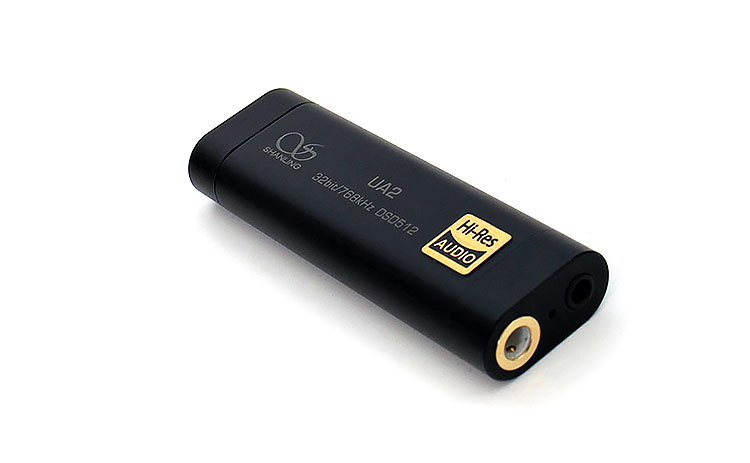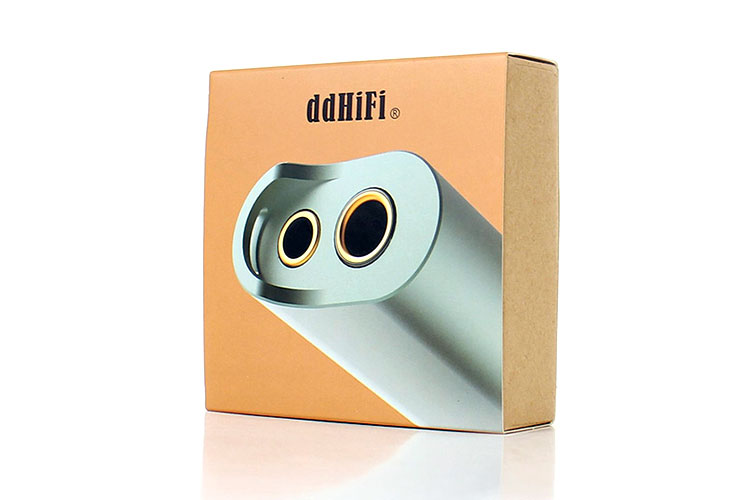Select Comparisons
FiiO KA3
$89.99
Technical
When it comes to bang for the buck and power per dollar ratio the FiiO KA3 hits the bullseye. Even though it has a small price tag it still manages an output rating of 240mW per side of the balanced 4.4mm connection and 130mW off the single-ended side. The KA3 balanced power output is the highest of all the dongles in this comparison.
On this particular dongle device, FiiO joined forces with Jade Audio and made a formidable model that uses a single ESS Technologies ES9038Q2M with a dual OP amp stage which is what gives the KA3 the most power output capability of the bunch.
Codecs step it up a notch due to it being able to reach PCM 32 bit/768kHz rates and DSD512 but just like the TC44C, it omits MQA capabilities. The on-shell surface mounted circular-shaped LED softly illuminates what format the KA3 is playing back.
Design
The FiiO KA3 shell is rectangular in general, rather squared off and ribbed for better heat dissipation I suppose. The shell never gets hot to the touch or even barely warm regardless so I think the ribbed look is just that, decorative.
IO is identical between these two dongles. The input port is a USB-C plug and the other end has dual output ports. One is 3.5mm and the other is 4.4mm balanced.
When it comes to size the KA3 is a rather chunky-looking dongle but considering the available power it has, I would consider it a good tradeoff.
Performance
Somehow and although both these dongles use totally different chipsets which have the reputations of differences in sound signatures they both sound somewhat similar since they both have a very relaxed tuning and seem to prefer politeness over aggressiveness.
I was quite surprised to hear a FiiO DAC amp, in this case, the KA3 dongle to be so soft-mannered. They probably use an Apodizing DAC filter or similar and shave off the top edges off any peaks that could be present in the sound signature to make it sound smooth and edge free.
This characteristic, however, does not affect dynamics much and just gives the tonality a non-offensive character because attack and decay, dynamic range, and even background noise seem to be at similar levels which are all at acceptably good levels.
HIBY FC5
$159.00
Technical
The HiBy FC5 is another dual DAC chip dongle but with a single headphone output and a single USB input connection. It mostly differs from the TC44C in that it has onboard volume control and an external LED indicator but it also has a slightly higher price tag.
The FC5 internal components consist of dual ES9281pro DACs and a separate amplifier stage that uses a pair of ES9603Q amplifier chips.
Although the FC5 sports a separate dual-chip amplifier stage the power levels are almost the same between the two compared dongles. The specifics are 125mW on the FC5 and 120mW off the TC44C both measured at 32Ω and off the similar balanced 4.4mm port.
Codec compatibility on the FC5 includes MQA capability but it drops DSD down to 128, comparatively the TC44C can reach DSD256.
It’s not a big deal really since most people almost unknowingly use PCM format most of the time and since both units can manage the same up to 32 bit/384kHz rates I would consider it a tie race since everyone stay below those bit rates anyway.
Design
The FC5 is rather chunky, 10mm taller and weight is around double standing at 22.5 grams but I would still consider it pocket friendly. The shell is all black, all-metal with rounded corners and edges.
There is an LED indicator on the shell but it lights up through a small slit instead of it being a usual spot LED or round shape and it is somewhat different from the rest.
The usual connections are found onboard which consists of a USB-C input but there’s only one headphone output port onboard which is a balanced 4.4mm and the 3.5mm connection is obtained with an included adapter.
The single output port could be beneficial because if you exclusively use a 4.4mm connection then with a dual outlet dongle one outlet will always be exposed to the elements like rain and dust while on the FC5 the surface will remain more impervious long as you have something connected to the single 4.4mm connection.
Performance
The FC5 is warm sounding with good dynamics and a speedy transient response and overall it will please most listeners. The frequency response is well distributed and it seems that the slight warmth is the only overt coloration. I would also say this particular dongle could possibly have the darkest background of the bunch.
The only negative observation was that the FC5 did run out of steam power-wise at higher volume levels and before the TC44C did although their power output ratings are almost identical and the only difference between the two on paper is a minuscule 5mW at the same 32 Ohm load.
Did the volume level bring a benefit or two to put the FC5 ahead of the bunch? Not really but perhaps it gives an explanation to the lower noise floor because you could moderate the volume more finitely and use it as a gate or gain control. Hence also it lowers the background noise levels since it’s independent and not tied together to the source volume control.
Shanling UA2
$85.00
Technical
The Shanling UA2 uses the same DAC chip as the FiiO KA3 which is the ES9038Q2M but takes another route far as amplification. The chosen component for the front end was another ESS chip which is the Ricore RT6863 and it actually marries well with the DAC since both chips were made to work with one another as a combo by ESS.
Power output is a respectable 195mW off the balance side and 125mW off the single-ended 3.5m. To obtain max power output however you have to tap into the 2.5mm side. However, the single-ended side is not too bad comparatively if you look at power output numbers.
Design
If you compare both these dongles far as weight is concerned there’s only a 0.3 grams of difference between the two which is minuscule, to say the least. Where they differ is in shape. The UA2 has a longer body than the TC44C but is more on the slim side design-wise.
The all-metal shell has a matte black finish and gold-plated connections. I’m not sure why Shanling decided to go with the 2.5mm jack instead of the 4.4mm which is commonly implemented on all the other dongles including the ones in this comparison. It seems out of the norm but I bet it was done to keep that slim look intact.
Performance
The UA2 dongle is another ESS warm-sounding dongle device that drive-wise does well since it sits somewhere in between this lineup in sheer raw power output. To be honest there’s not much of a difference in dynamics between compared to the TC44C. Most differences are subtle at most since most use similar chips.
One concern that pops up often with dongle DACs is battery drain and the Shanling UA2 does seem to have slightly higher power consumption. It also runs the hottest in this lineup but is only warm to the touch honestly and that mostly is observable when you push the volume levels hard and with a not so easy to drive headphone.
One curious point about the Shanling UA2 is that it seems to have more power on the single-ended side than the TC44C. This is probably UA2’s best-selling point if balanced connectivity does not strike an interest in you.
Our Verdict
The ddHiFi TC44C excels in the fact that it packages itself in a small shell and has a high-power output level that seems to be underrated but the tradeoff is the lack of features since there is no volume control or a mobile device app with sound shaping features and/or firmware upgrades.
The power output is clean and demonstrates good dynamics while simultaneously presenting a soft character that makes it fall within a category that sounds more objective than warm which is what the other dongle DACs mostly portray.
With a commonly available set of connections, the TC44C’s useable versatility is just as high comparatively but simply remains its main character and although the Lanyard hole is a neat feature it can also get in the way of connectivity.
Set aside that minuscule detail and you have a dongle DAC that is different after all in looks and sound profile.
ddHiFi TC44C Technical Specifications
- DAC Chip: Dual Cirrus Logic CS43131
- Output Power: 120mW (4.4 mm Bal. 32 Ohms)
- SNR: 125db
- Dynamic Range: 12db
- THD+N: 110db
- PCM Decoding Capability: Up to 32 bit/ 384kHz
- DSD Decoding Capability: Native DSD64/ DSD128/ DSD256
- Dimensions: 40.8x22x12.5mm
- Weight: about 12.9 grams

